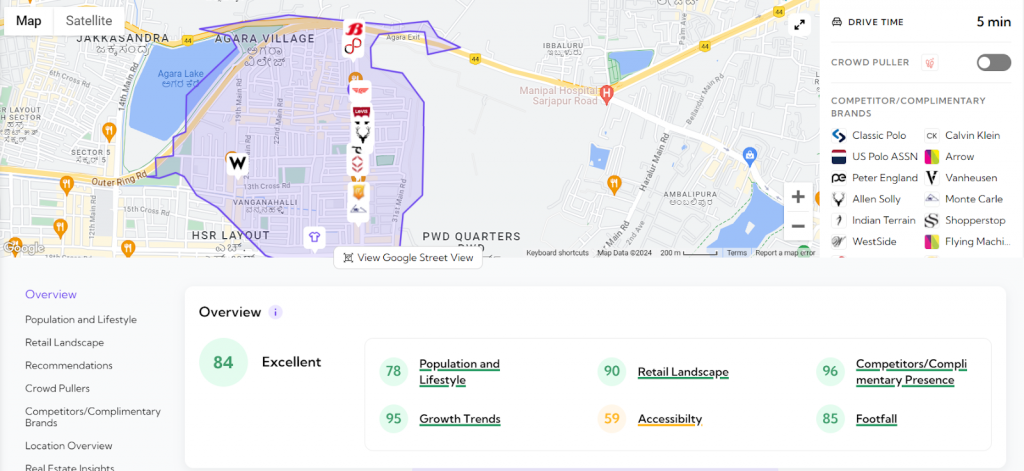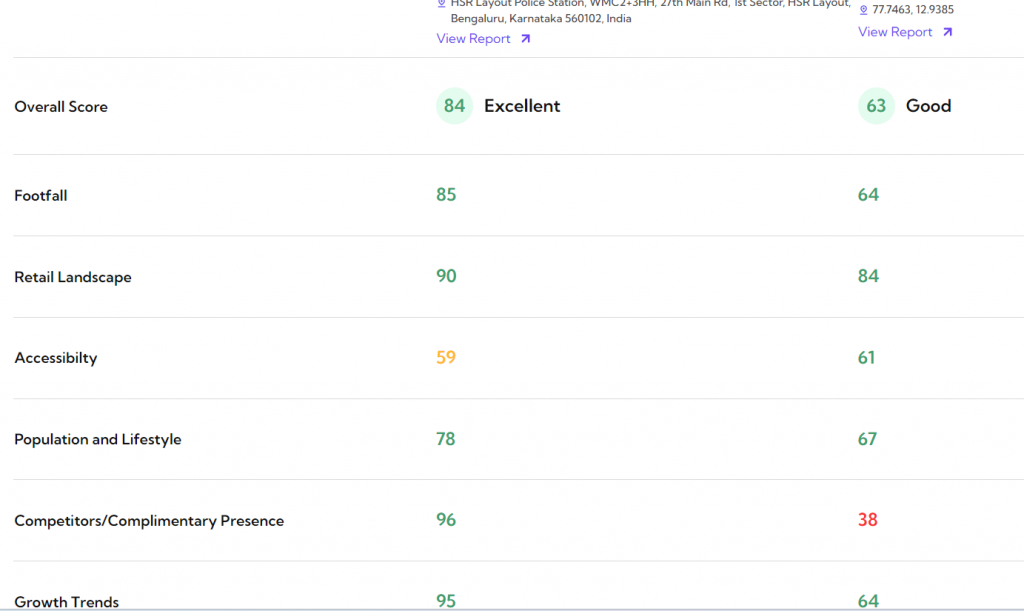The success or closure of a retail store is an intricate interplay of various elements, demanding a comprehensive understanding of consumer behavior, economic trends, technological advancements, product-market fit, and more.
The surge in retail closures is not a matter of mere chance. Comprehensive data analysis points to four primary contributors: poor location selection, brand cannibalization, bad merchandise mix, and erroneous financial decisions.
Let us explore these reasons resulting in store closures.
Reason 1: How Poor Location Selection Affects Retail Store Closure
Location underpins the success of retail stores, after all opening a store in the middle of nowhere will hardly generate any sales. The presence of a target audience, footfall, and accessibility are a few of the variables that determine the profitability of a location.
A location that does not possess these characteristics will result in the early closure of the retail store.
The location aspect also impacts the cost and profitability of the store and the brand. Imagine if you opened a store in a location with high rent and low foot traffic. The expenses will compound driving the establishment to a premature end.
Incorrect store location also puts a strain on the logistics of getting products to the store. Furthermore, if a retail store is located in a vacuum, away from any competition, it increases the difficulty in attracting the target customers. There is a reason why retail brands belonging to similar categories tend to cluster together.

A site report of the location analysis of 27th Main Road, HSR Layout, in Bangalore. Notice the clustering of complementary and competing brands around the chosen location indicating a high inclination towards opening a fashion store in the selected trade area.

In this site report, notice the difference in the indices predicting the store’s success between the location mentioned above and a random location in South-Eastern Bangalore.
The reason why location can be a determinant of the success of a retail store can be understood from these two examples.
Reason 2: How Cannibalization Affects Retail Store Closure
Cannibalization is a process that occurs when stores of the same brand open in proximity to one another and end up pulling traffic from each other leading to a loss in revenue.
Cannibalization can be a result of over-saturation of the market or due to grievous oversight when considering locations to open a new store.
A famous example of cannibalization in retail comes from Starbucks, which during its growth phase had four outlets in a two-kilometer radius each pulling revenue from the other.
To better understand how cannibalization can result in store closure, let us consider the example of a brand X. This brand identified a population density of 10x in a trade area which could be adequately serviced by a single store. The growth rate in the first store led the expansion team to erroneously misinterpret the demand in the location and they opened a second store. This second store now began to eat into the revenue of the initial store, leading to both stores not generating any profit.

Consider this example from RetailIQ capturing the presence of two more supermarkets and two Spencer supermarkets close to each other. The retail stores in this example might infringe upon the trade area of each other reduce their overall profit and even lead to their closure.
Reason 3: How Poor Merchandise Mix Affects Retail Closure
Different locations require different approaches. A brand’s insistence on having a uniform merchandise mix across all their store without considering local interests can be a recipe leading to the closure of the store.
In the following example, consider the example of a leading eyewear brand with stores in two locations in India. These two locations require different products to target the interests of their trade area.
| Store location | Micro-level Understanding of Catchment |
| Hauz Khas, New Delhi | Trendy/new product linesBrighter, experimentative designs. Medium size SKUs |
| JP Nagar, Bangalore | Sober product linesClassic designs, limited color range. Large size SKUs |
Example of the catchment difference for two stores of the same brand.
The difference in the requirements of the same target audience in different cities can be understood from this example, where one city demands trendy products, the other will suffice with sober product lines.

This site report generated by RetailIQ further demonstrates the difference in the variables determining the success of stores in the two locations, JP Nagar, Bangalore, and Hauz Khas, New Delhi.
These site reports show that a comprehensive retail strategy that does not consider the target market demands results in retail store closure.
Reason 4: How Poor Financial Decisions Affect Retail Store Closure
Sometimes retail closure is not a factor of variables like location or merchandize mix. Sometimes a store can close because of a series of unfortunate financial decisions.
Consider the case of Spencer’s supermarket in Trivandrum, Kerala. A location that is synonymous with the junction where it is located, Spencer’s Junction. This icon of Trivandrum’s retail landscape faced closure a few months ago. A part of a series of restructuring efforts of the parent company, Spencer’s Retail, which decided to cease its operations in Kerala and Tamil Nadu.
Or, the case of a national supermarket chain, which at one time was the national leader in the category of having to sell its company to its competitors. It was a natural conclusion to a series of financial decisions that included over-expansion along with a reluctance to embrace new technologies.
Debt-laden companies lack the capital to invest in new technologies and expand into new burgeoning markets. Aggressive expansion from retail companies and brands with sufficient funds reduces the market share of the financially unstable company which lacks the funds to compete in this uneven playing field leading to its untimely closure.
Conclusion
To Recap:
These are four reasons affecting a retail store closure.
- Location
- Cannibalization
- Merchandise mix
- Financial decisions
This is not an exhaustive list of the reasons behind the location leading to the closure of a retail store. The success of a retail store is a result of multiple factors synergizing with each other to create a cohesive whole. Similarly, the closure of a retail store is a confluence of multiple negative factors.
While these four factors play a significant role, the retail ecosystem is intricate.
By delving deeper into consumer behavior, economic trends, and technological advancements, we can equip brands with the data-driven insights necessary to navigate the future of retail with confidence.


